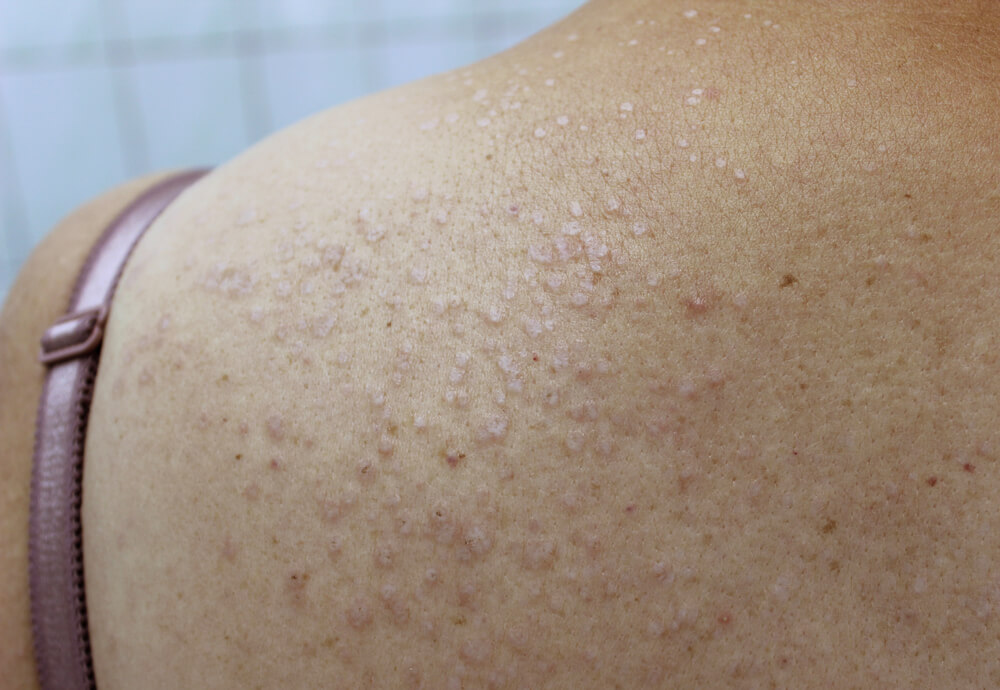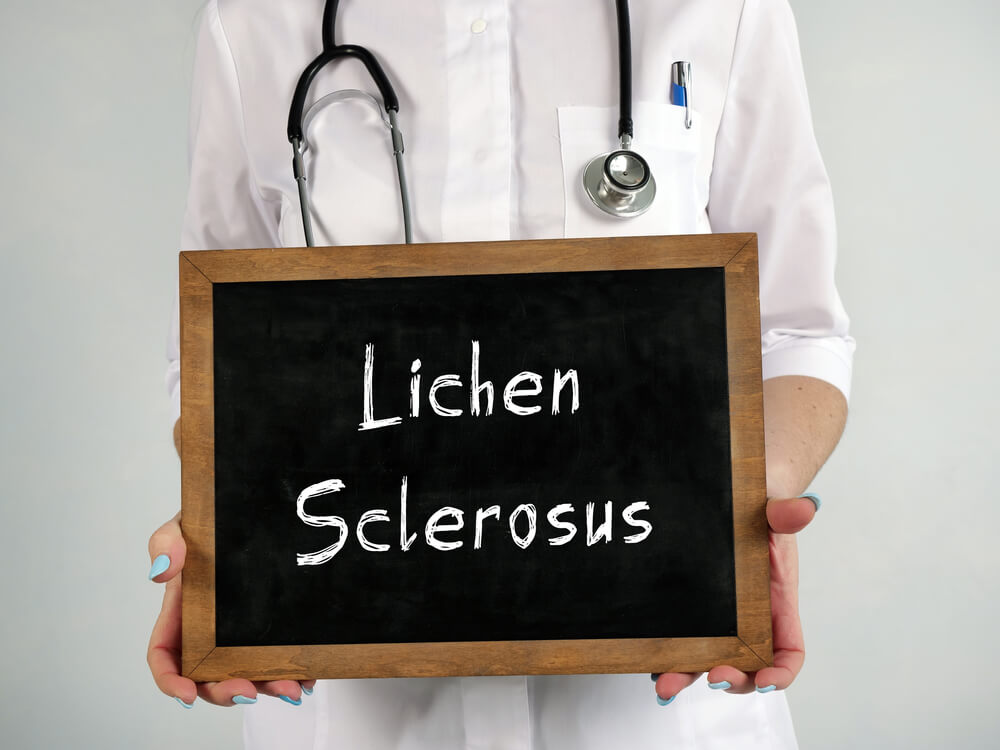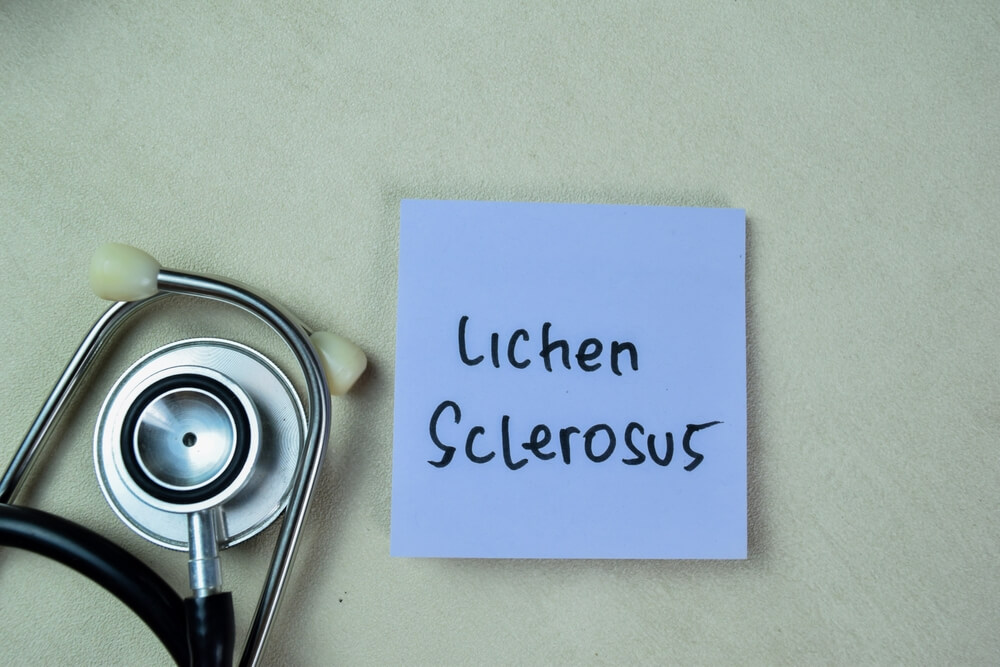Lichen sclerosus, a relatively rare but impactful dermatological condition, affects individuals of all ages, with a higher prevalence among postmenopausal women and children. This article aims to shed light on what lichen sclerosus is, its potential causes, and the various treatment options available.
In this article, the goal of our team at My OBGYN Specialists is to provide you with a comprehensive understanding of this condition to empower you with knowledge and promote timely intervention.
What is Lichen Sclerosus?

Lichen sclerosus, sometimes referred to as lichen sclerosus et atrophicus (LSA), is a chronic, inflammatory skin condition that predominantly affects the genital and anal areas. This condition can occur in both males and females, but it is more commonly diagnosed in women, with the majority of cases affecting the vulvar region.
The condition is characterized by distinctive, thin, white patches of skin, often described as parchment-like or wrinkled in appearance. Lichen sclerosus can lead to discomfort, pain, and itching, making it a distressing condition for those who experience it.
What Causes Lichen Sclerosus?
The exact cause of lichen sclerosus remains the subject of ongoing research. While the condition’s precise origin is not yet fully understood, several factors are believed to contribute to its development. These include:
- Autoimmune Factors: There is evidence to suggest that autoimmune factors may play a role in the development of lichen sclerosus. An abnormal immune response can lead to inflammation and tissue damage.
- Genetics: Some studies indicate a genetic predisposition to lichen sclerosus, with a family history of the condition often noted in affected individuals.
- Hormonal Changes: Hormonal imbalances, particularly in postmenopausal women, are associated with lichen sclerosus. This is thought to be related to the thinning of genital tissues that occurs with hormonal changes.
- Trauma or Injury: In some cases, lichen sclerosus may develop as a response to trauma or injury to the affected area.
Recognizing Lichen Sclerosus Symptoms
Early recognition of lichen sclerosus symptoms is crucial for timely diagnosis and treatment. Common signs and symptoms of lichen sclerosus include:
- Itching: Pruritus or itching in the genital or anal area is one of the most common symptoms of lichen sclerosus.
- White, Thin Skin: Affected areas typically exhibit thin, white, wrinkled skin, which may appear shiny or smooth.
- Discomfort or Pain: Lichen sclerosus can lead to discomfort, pain, and soreness, especially during sexual intercourse or when urinating.
- Bleeding or Blistering: In severe cases, lichen sclerosus may cause the skin to become fragile, leading to bleeding or blistering.
Diagnosing Lichen Sclerosus
Diagnosing lichen sclerosus is a crucial step in managing the condition effectively. Healthcare providers, particularly those specializing in gynecology or dermatology, play a pivotal role in this process. A thorough examination is the initial and often most critical component of the diagnostic journey.
During the examination, the healthcare provider will closely inspect the affected areas, paying particular attention to the genital and anal regions, where lichen sclerosus typically manifests. They are trained to recognize the characteristic signs of the condition, which include thin, white patches of skin that may appear wrinkled or parchment-like. These distinctive features can be observed visually and through tactile examination.
In some cases, a clinical diagnosis based on these visible signs may be sufficient to confirm lichen sclerosus. However, to provide absolute certainty and to rule out other conditions that may present with similar symptoms, the healthcare provider may recommend a biopsy.
A biopsy is a medical procedure where a small tissue sample is carefully and minimally invasively removed from the affected area. This tissue sample is then sent for microscopic examination, a process conducted by pathologists. This microscopic analysis allows for a closer and more detailed inspection of the tissue at a cellular level.
The biopsy procedure serves a dual purpose: it not only helps confirm the presence of lichen sclerosus but also assists in ruling out other potential skin conditions or concerns. The microscopic examination reveals specific cellular changes that are indicative of lichen sclerosus, such as alterations in the skin’s structure and immune response.
Lichen Sclerosus Treatments
Lichen sclerosus is a chronic condition, but it can be effectively managed with various treatment options. The choice of treatment depends on the individual’s symptoms, the severity of the condition, and their medical history. Common lichen sclerosus treatments include:
Topical Steroids
High-potency topical corticosteroids are often the first-line treatment for lichen sclerosus. These medications help reduce inflammation and alleviate symptoms.
Emollients
Regular application of emollients, which are moisturizing creams or ointments, can help improve skin hydration and reduce discomfort.
Hormone Therapy
Hormone creams or ointments may be prescribed for postmenopausal women to address hormonal imbalances.
Immunomodulators
In cases where corticosteroids are ineffective or not recommended, calcineurin inhibitors can be used to manage inflammation.
Regular Monitoring
Individuals with lichen sclerosus require ongoing monitoring to assess their condition’s progression and treatment effectiveness.
Surgery
Surgical procedures, such as vulvar or vaginal reconstruction, may be considered for severe cases of lichen sclerosus. This is typically a last resort when other treatments are not successful.
Surgical procedures for severe cases of lichen sclerosus are typically reserved as a last resort, following thorough consideration of other treatment options. The decision to pursue surgical intervention is not taken lightly and is made in consultation with a specialized healthcare provider. It is crucial for patients to understand that surgery is generally considered when the condition significantly impairs their quality of life or when other treatments have proven ineffective.
Vulvar or vaginal reconstruction surgeries aim to alleviate the most severe and persistent symptoms of lichen sclerosus, such as structural changes or scarring in the genital region. These procedures are highly specialized and are typically performed by gynecological or dermatological surgeons with expertise in addressing lichen sclerosis-related concerns. Prior to surgery, a comprehensive evaluation is conducted to determine the appropriateness of the procedure, and patients are provided with detailed information about the risks, benefits, and expected outcomes. Patients considering surgical intervention should engage in open and honest discussions with their healthcare provider to make informed decisions that align with their individual needs and goals.
Coping with Lichen Sclerosus

Medical Concept About Lichen Sclerosus With Inscription On The Sheet.
Coping with lichen sclerosus can be challenging, but with the right support and guidance, individuals can effectively manage their condition. Here are some tips for coping with lichen sclerosus:
- Open Communication: Discuss your symptoms and concerns with a healthcare provider who specializes in gynecology or dermatology. They can provide a tailored treatment plan and answer your questions.
- Self-Care: Keep the affected area clean and dry. Avoid using harsh soaps or detergents, and opt for mild, unscented options.
- Regular Follow-Ups: Attend regular follow-up appointments to monitor your condition’s progress and make any necessary adjustments to your treatment plan.
- Support Groups: Consider joining a support group or seeking counseling to connect with others who are experiencing lichen sclerosus. Sharing experiences and coping strategies can be highly beneficial.
- Healthy Lifestyle: Maintain a healthy lifestyle, including a balanced diet and regular exercise, to support overall well-being.
Finishing Thoughts
Understanding what lichen sclerosus is, its potential causes and available treatment options is vital for individuals affected by this condition. While lichen sclerosus is a chronic condition, timely diagnosis, and proper management can help individuals lead a comfortable and fulfilling life. It’s essential to seek professional medical advice and develop a personalized treatment plan to address the unique needs of each individual. With the right support, those affected by lichen sclerosus can effectively manage their condition and improve their quality of life.


